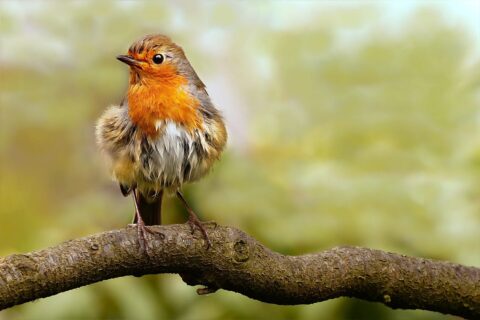Explainer
The Deep History of Racism and Speciesism Behind ‘They’re Eating the Dogs’
Election 2024•7 min read
Perspective
The animal protection movement has traditionally focused on reducing suffering on factory farms and in laboratories. Now, advocates are entering the wild to fight animal suffering in creatures' natural habitats.


Words by Julie Knopp
A koala named Ellenborough Lewis has captured the heart of the internet. Millions of supporters from around the globe are cheering for Ellenborough as he recovers from life-threatening burns sustained in a forest fire. A woman surrounded by flames in the midst of the Australian bushfires rescued the koala using the shirt off her back. Two weeks later, the viral video of his rescue has helped to garner more than a million dollars in donations for the hospital treating Ellenborough.
Nature can be brutal for wild animals, who are afflicted by extreme weather conditions, like the Australian bushfires, and much more. A new animal protection movement posits that humans can and should systematically reduce the suffering of wild animals. Most of us are familiar with efforts to improve the lives of shelter pets and animals in factory farms, yet few people have heard of the wild animal welfare movement. The population of free-roaming animals dramatically exceeds the number of animals living in factory farms, in laboratories, or as companions, but humans pay little attention to the wellbeing of wild animals. Wild animal welfare advocates believe that humans can best help wild animals by identifying the sources of suffering in the wild and implementing solutions that eliminate them.
The Wild Animal Initiative (WAI), established in early 2019, is perhaps the only organization devoted exclusively to wild animal welfare. According to WAI Executive Director Michelle Graham, the vision for the movement is to enable “as many animals as possible [to live] as good lives as possible.” In practice, WAI works to “research, raise awareness of, and reduce the suffering of wild animals.” According to Graham, advances in research biology, including the ability to develop more sophisticated biological models, now make it possible to discover more about what life in the wild is really like.
With the WAI in its infancy, Graham and her counterparts primarily focus on learning and research, to determine the viability of different interventions and predict unintended outcomes. Graham believes that humans have the capacity to improve life in the wild – or at least stop making life worse for the creatures who live there.
Some elements of wild animal welfare work and traditional conservation efforts overlap, but these two fields serve distinct purposes. Wild animal welfare workers focus exclusively on reducing the suffering of free-roaming animals. Conservationists generally aim to maintain or increase specific animal populations, often focusing on endangered species. Consider the situation of the Florida manatee: the Florida Fish and Wildlife Conservation Commission changed the status of manatees from endangered to threatened in 2017, which conservationists celebrated as a victory. According to the Dolphin Research Center, however, 85 percent of Florida manatees have scarring on their backs from boat collisions. Harm to manatees from boat collisions has not decreased even as the manatee population has stabilized. Human-caused manatee suffering needlessly persists. Wild animal welfare advocates focus predominantly on improving the quality of life for wild animal species.
The wild animal welfare movement seeks to address the myriad of unanswered questions about wild animal suffering. Researchers are exploring the many causes of suffering and death in the wild, and also seek to understand whether animals – wild and domesticated – experience suffering similarly to humans. Once researchers determine a potentially viable intervention to reduce wild animal suffering, they must closely examine all the possible repercussions. Interventions may increase the target species’ population, which can, in turn, modify ecosystems and food webs in ways that are difficult to predict.
The WAI currently devotes much of its resources to a project that advocates for increased usage of humane insecticides. Scientists remain divided on whether insects feel pain; but even if insects only experience a tiny fraction of the suffering that humans experience, the total suffering of the estimated quintillion insects could easily exceed our own. Common strategies to manage crop pests include the introduction of the Ichneumon wasp, which eats pests alive from the inside out, as a natural predator. Another pest control method, known as “flaming,” uses intense heat to burn off insects’ legs and antennae. Wild animal welfare advocates believe that killing crop pests quickly, via the use of fast-acting insecticides, is less painful for insects. Pyrethroid is an example of a fast-acting humane insecticide. Farmers can reduce global suffering by replacing slow, painful pest management methods with humane insecticides, without affecting other insect populations or damaging the local ecology.
The WAI has also launched a program to reduce the suffering of wild birds by educating new cat owners. Research suggests that global bird populations have been devastated by outdoor cat predation. Cats are brutal predators who kill not just for food, but also for mental stimulation. Cats cause birds to suffer by inflicting injuries that permanently maim birds or lead to protracted, painful deaths. The WAI’s cat predation program aims to protect birds from injuries and grisly deaths by encouraging cat owners to keep their companions indoors, where they are also safer. The WAI hopes that, by educating the public about how outdoor cats harm birds and other species, it can significantly decrease wild animal suffering. The cat predation program represents an intersection between wild animal conservation and welfare work; the program’s success will both increase bird populations and improve birds’ quality of life.
Critics of the wild animal welfare movement argue that humans should focus only on reducing human-caused animal suffering. Billions of animals each year suffer miserable lives at the hands of humans on factory farms and in laboratories; improving the lives of these animals is indeed a worthy cause, but does not negate the legitimacy of the wild animal welfare movement. Graham takes issue with the idea that we can accurately determine which animal suffering in the global ecosystem is caused by humans. “There are all kinds of issues that face animals. We have a huge impact on the biosphere and our actions are all connected,“ Graham says. “If we say, ‘Let’s only focus on what’s our fault’, [then] that’s going to be hard to do.” From radically altering natural landscapes to causing climate change, humans impact the entire ecosystem, often in devastating ways.
Projects to introduce humane pesticides and reduce cat predation represent a broader effort to include wild animal welfare in the animal protection movement. Earth’s population of wild creatures dwarfs that of the companion and farm animals who currently occupy the focus of most animal protection work. The wild animal welfare movement is still in its infancy and much of its impact remains to be seen. Still, advocates hope that research and careful interventions can earn free-roaming animals more human attention, in addition to reducing their suffering. Just as Graham perceives an obligation to “live kindly with [her] human neighbors,” she also “owes [her] animal neighbors the same respect.” By including wild animals in the broader animal protection movement, a kinder world for all beings is possible.